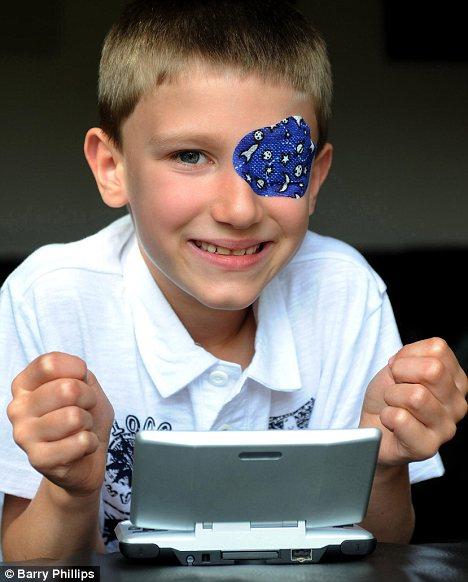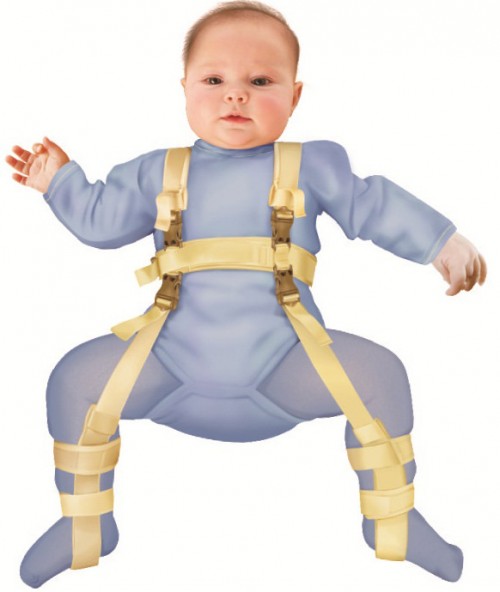Amblyopia and Developmental Dysplasia of the Hip
There are two things which a trained pediatrician usually checks for more frequently than other physicians who see children: Developmental Dysplasia of the Hip(DDH) and Amblyopia (lazy eye).
Developmental Dysplasia of the Hip, or DDH (formerly CDH), occurs when the hips of a new born infant are either inadequately or inappropriately developed at birth. The acetabulum (socket) of the pelvis is too shallow to allow the head (ball) of the femur (large leg bone) seat well, so it continually pops out.
It occurs in one out of 1,000 live births to predominantly first-born females with a close relative who has the same thing, and is considered a "multifactorial" birth defect. Nine times more common in females than males, it is also thought to be a response to the mother’s hormones during pregnancy. Other considerations are that: the left hip is more frequent than the right; there may be a tight uterus which prevents fetal movements; or, a breech presentation at delivery.
Diagnosis is all-too-often not made until too late to adequately treat, because it is either: not thought of, not looked for, or not adequately examined for. Confirmation is easily done with x-rays, ultrasounds, CT scans or MRI’s; but it must be found on examination first! And ONE “normal” exam doesn’t necessarily mean that there is no problem, the exam can change over time.
Diagnosis is all-too-often not made until too late to adequately treat, because it is either: not thought of, not looked for, or not adequately examined for.
Improperly set hips are really not much of a problem for an infant because they don’t voluntarily put much weight on their legs. However, if the hips are still loose and easily dislocated from their sockets, by the time the child starts to stand and walk, problems arise.
An infant, of course, does a lot of growing in the first year. Without a good tight femur the socket has no incentive to develop into a nice deep receptical. However, hips which do not have a very good socket can develop one if given enough time, and the legs are held in the correct position — usually with a “Pavlik Harness”.
You can probably sense that if this problem is not picked up early, the child can have substantial problems with walking, and correction becomes extremely difficult.
If, on the other hand, this dislocation is noticed early, correction is most often an easy matter. The child is placed in a "jumpsuit" harness with straps that attach to her shoes, keeping her knees flexed in a frog-leg position.
The jumpsuit is worn 24-hours a day for several months, which forces the hip bone to seat in the socket in the correct position. The socket, then, merely grows around the femur in a normal manner as the child grows. Occasionally, if the problem persists after 6-months when she outgrows the harness, a lower body cast and/or surgery may be needed.
Amblyopia can affect one in 20 infants, and is the leading cause of visual loss in children.
Early detection and treatment can, in most cases, correct the problem. But, every year, there are nearly 100,000 children who pass
the "point of no return" — where the visual problem can no longer be helped.
If the muscles in the eye are imbalanced and do not allow the eye to focus correctly (like in crossed eyes), the brain sees double vision. There are several reasons for an imbalance, having nothing to do with "laziness"; but, the name has stuck.
As the child’s brain develops, it learns to "shut off" the out-of-focus eye, which then makes them blind in that eye even though the eye itself can really process light.
If the problem is noticed early, the the ophthalmologist merely occludes (patches) the good eye, which then forces the bad eye to work and the brain to register its image therefore not shutting off.
Without treatment, the "lazy" eye fails to develop central vision; therefore, treatment is recommended before the age of four.
If lazy eye is not treated before a child is seven years old the central vision may not develop — ever; even with glasses, eye exercises, or eye surgery.
Pediatric exam: Most pediatricians examine for both problems during every well-baby visit. He spreads the legs apart at the hips and feels for any "pop or click or bump" which indicates that the hip bone is not seating correctly in the socket. If DDH is noticed, the diagnosis usually is confirmed by x-ray and orthopedic surgeon is consulted for treatment.
An eye examination is important for every child during their routine well baby and child visits. The pediatrician will check for light reflexes in the eye as well as tracking and any evidence of "wandering".
This eye examination is important because half of the children who are actually amblyopic are not recognized by their parents or teachers, and and have no symptoms until either caught on a good examination or (unfortunately) found to be blind as an older child or adult.


